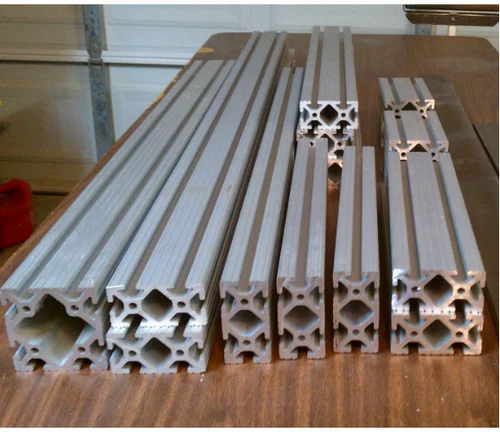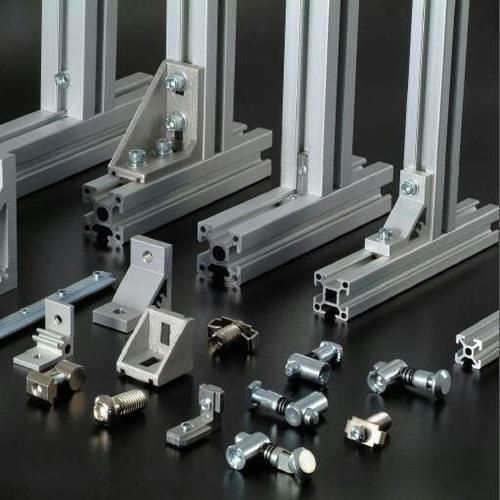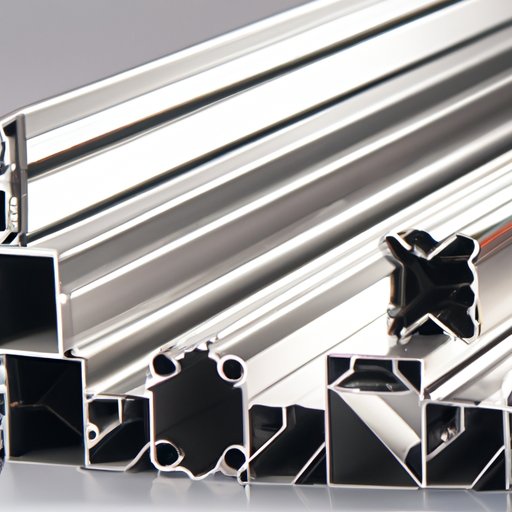Content Menu
● Introduction
● What is Aluminum Extrusion?
● Benefits of Aluminum Extrusion
● Common Applications of Aluminum Extrusions
● Understanding Aluminum Extrusion Profiles and Shapes
● The Aluminum Extrusion Process Explained
● Choosing the Right Aluminum Extrusion Supplier
● Conclusion
● Related Questions
>> 1. What materials are commonly used in aluminum extrusion?
>> 2. How does the aluminum extrusion process compare to other manufacturing methods?
>> 3. Can aluminum extrusion bars be recycled?
>> 4. What industries benefit the most from aluminum extrusion?
>> 5. How can I ensure the quality of aluminum extrusion bars?
Introduction
Aluminum extrusion is a manufacturing process that transforms aluminum alloy into specific shapes and profiles. This versatile technique is widely used across various industries due to its ability to produce lightweight, strong, and corrosion-resistant components. In this article, we will explore how the aluminum extrusion process works, the benefits of using aluminum extrusion bars, and the diverse applications of this technology.

What is Aluminum Extrusion?
Aluminum extrusion is a process that involves forcing aluminum alloy through a die to create a specific cross-sectional shape. The process begins with heating aluminum billets, which are cylindrical pieces of aluminum, to a temperature that makes them malleable. Once heated, the billets are placed in an extrusion press, where a ram pushes the aluminum through a die. The die determines the final shape of the extruded aluminum, which can be anything from simple bars to complex profiles.
The aluminum extrusion process can be categorized into two main types: direct extrusion and indirect extrusion. In direct extrusion, the billet is pushed through the die, while in indirect extrusion, the die is moved towards the billet. Both methods have their advantages and are chosen based on the desired outcome and the complexity of the shape.
Benefits of Aluminum Extrusion
Aluminum extrusion bars offer numerous benefits that make them a preferred choice in various applications:
- Lightweight and Strength: Aluminum is known for its high strength-to-weight ratio. This means that aluminum extrusion bars can provide structural integrity without adding excessive weight, making them ideal for applications in the automotive and aerospace industries.
- Corrosion Resistance: Aluminum naturally forms a protective oxide layer when exposed to air, which helps prevent corrosion. This property makes aluminum extrusion bars suitable for outdoor applications and environments where moisture is present.
- Design Flexibility: The extrusion process allows for a wide range of shapes and profiles, enabling designers to create custom solutions tailored to specific needs. This flexibility is particularly beneficial in industries such as construction, where unique designs are often required.
- Cost-Effectiveness: Aluminum extrusion is a highly efficient manufacturing process that can produce large quantities of components with minimal waste. This efficiency translates to cost savings for manufacturers and consumers alike.
- Sustainability: Aluminum is a recyclable material, and the extrusion process can be adapted to use recycled aluminum. This makes aluminum extrusion a sustainable choice for environmentally conscious manufacturers.
Common Applications of Aluminum Extrusions
Aluminum extrusion bars are used in a wide variety of applications across different industries:
- Construction: In the construction industry, aluminum extrusion bars are commonly used for window frames, door frames, and structural components. Their lightweight nature and resistance to corrosion make them ideal for both residential and commercial buildings.
- Automotive: The automotive industry utilizes aluminum extrusion bars for various components, including chassis, bumpers, and heat exchangers. The lightweight properties of aluminum help improve fuel efficiency and reduce emissions.
- Aerospace: In aerospace applications, aluminum extrusion bars are used for structural components, fuselage frames, and wing structures. The strength and lightweight characteristics of aluminum are critical for aircraft performance.
- Electronics: Aluminum extrusion bars are also used in the electronics industry for heat sinks, enclosures, and mounting brackets. The excellent thermal conductivity of aluminum helps dissipate heat effectively, ensuring the longevity of electronic components.
- Consumer Products: Many consumer products, such as furniture, appliances, and sporting goods, incorporate aluminum extrusion bars. The versatility of aluminum allows for innovative designs and functional features.

Understanding Aluminum Extrusion Profiles and Shapes
Aluminum extrusion profiles come in various shapes, each designed for specific applications. Some common profiles include:
- T-Bar: T-bars are often used in structural applications and provide excellent support and stability.
- U-Channel: U-channels are commonly used for framing and support in construction and manufacturing.
- Rectangular Bars: Rectangular aluminum extrusion bars are versatile and can be used in a wide range of applications, from furniture to industrial equipment.
- Custom Shapes: One of the significant advantages of aluminum extrusion is the ability to create custom shapes tailored to specific needs. This flexibility allows manufacturers to innovate and develop unique solutions.
The Aluminum Extrusion Process Explained
The aluminum extrusion process involves several key steps:
1. Billet Preparation: Aluminum billets are cut to the desired length and heated to a specific temperature, typically between 400°F and 900°F, depending on the alloy being used.
2. Extrusion: The heated billet is placed in the extrusion press, where a ram pushes it through the die. The die shapes the aluminum into the desired profile.
3. Cooling: Once extruded, the aluminum profile is cooled, usually by air or water, to solidify its shape.
4. Cutting: The extruded aluminum is cut to the required lengths for further processing or delivery.
5. Finishing: Depending on the application, the aluminum extrusion bars may undergo additional finishing processes, such as anodizing, painting, or machining, to enhance their appearance and performance.
Choosing the Right Aluminum Extrusion Supplier
When selecting an aluminum extrusion supplier, several factors should be considered:
- Quality: Look for suppliers with a reputation for producing high-quality aluminum extrusion bars. Quality assurance processes and certifications can indicate a commitment to excellence.
- Customization Capabilities: If you require custom shapes or profiles, ensure that the supplier has the capability to meet your specific design needs.
- Lead Times: Consider the supplier's lead times for production and delivery. Timely delivery is crucial for maintaining project schedules.
- Customer Support: A responsive and knowledgeable customer support team can help address any questions or concerns throughout the process.
- Sustainability Practices: If sustainability is a priority for your project, inquire about the supplier's practices regarding recycling and the use of recycled materials.
Conclusion
The aluminum extrusion process is a vital manufacturing technique that produces a wide range of components used in various industries. With its numerous benefits, including lightweight strength, corrosion resistance, and design flexibility, aluminum extrusion bars are an excellent choice for applications in construction, automotive, aerospace, electronics, and consumer products. Understanding the extrusion process and the different profiles available can help manufacturers and designers make informed decisions when selecting aluminum components for their projects.

Related Questions
1. What materials are commonly used in aluminum extrusion?
Aluminum alloys, such as 6061 and 6063, are commonly used in aluminum extrusion due to their excellent mechanical properties and corrosion resistance.
2. How does the aluminum extrusion process compare to other manufacturing methods?
Aluminum extrusion is often more efficient than other methods, such as casting or machining, as it produces less waste and allows for complex shapes with minimal additional processing.
3. Can aluminum extrusion bars be recycled?
Yes, aluminum is highly recyclable, and the extrusion process can be adapted to use recycled aluminum, making it an environmentally friendly option.
4. What industries benefit the most from aluminum extrusion?
Industries such as construction, automotive, aerospace, electronics, and consumer products benefit significantly from aluminum extrusion due to its versatility and performance characteristics.
5. How can I ensure the quality of aluminum extrusion bars?
To ensure quality, choose suppliers with established quality assurance processes, certifications, and a reputation for producing high-quality aluminum products.






















